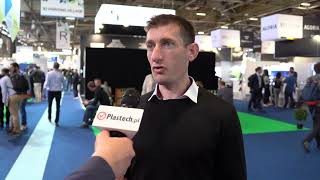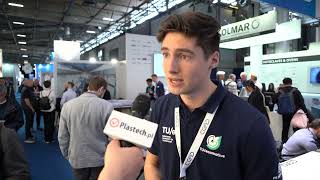 With its many new exhibits, BASF is sure to draw the attention at the "JEC Composites Show" being held from 12 to 14 March 2013 in Paris. One wind turbine and a blade profile, a fender demonstrator, a spoiler and a roof module will illustrate the wide spectrum of composite news. The new materials include a PET-based (polyethylene terephthalate) foam with the trade name Kerdyn as well as new epoxy and PU (polyurethane) systems that can be used to produce composite parts by means of Resin Transfer Molding (RTM) processes. In addition, the BASF experts will be presenting coatings of wind turbine rotor blades.
With its many new exhibits, BASF is sure to draw the attention at the "JEC Composites Show" being held from 12 to 14 March 2013 in Paris. One wind turbine and a blade profile, a fender demonstrator, a spoiler and a roof module will illustrate the wide spectrum of composite news. The new materials include a PET-based (polyethylene terephthalate) foam with the trade name Kerdyn as well as new epoxy and PU (polyurethane) systems that can be used to produce composite parts by means of Resin Transfer Molding (RTM) processes. In addition, the BASF experts will be presenting coatings of wind turbine rotor blades.With the aid of its multimaterial Lightweight Composite Team, BASF is intensively investigating composite concepts for the body and chassis of motor vehicles. The three plastic matrix systems based on epoxy resin, PU and polyamide, together with continuous-fiber reinforcement as well as high-volume processing by means of resin injection methods, especially RTM, provide the basis. Using a test component in the form of a carbon fiber-reinforced fender demonstrator, BASF will be exhibiting the new epoxy resin Baxxodur System 2220 which was developed specifically for high-pressure RTM. The polyurethane side will be represented by a spoiler with RTM insert produced from the new Elastolit R 8800. Both thermosetting resins employ novel curing mechanisms, allowing them to cross-link quickly. The transparent epoxy resin Baxxodur System 2220 offers a demolding time of only 2.5 minutes at 120°C while offering a high resin toughness. The custom formulated polyurethane system RTM Elastolit R 8800 is compatible with all established fiber sizings and offers exceptional fatigue strength. Its tolerance for damage is also very high. Both new resin systems have a wide processing window and can be demolded easily, through incorporated matched processing aids.
The convertible roof module being exhibited serves to demonstrate new concepts and BASF's versatile materials for the RTM process as well: The sandwich component, which was developed together with EDAG GmbH, consists of a closed-cell polyurethane foam core between two carbon fiber-reinforced skin layers. With a total weight of 2.9 kg, the roof segment achieves a 40% weight savings compared to an aluminum counterpart and more than 60% compared to a steel counterpart. Possible applications for such material and processing combinations include, in addition to attached parts such as doors, trunk lids and roof modules, structural vehicle components subjected to high loads as well.



